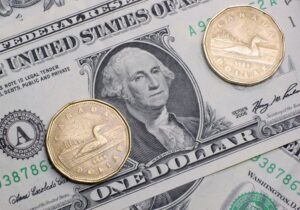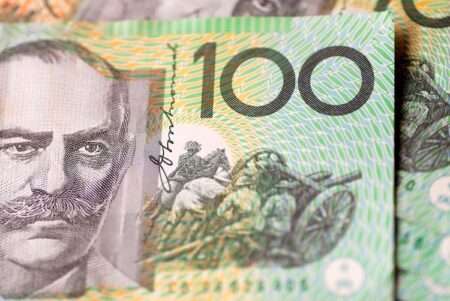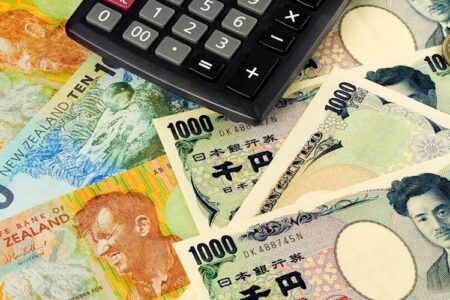- AUD/USD receives downward pressure from rising odds of fewer rate cuts by the US Federal Reserve.
- RBA hinted at potential rate cuts in 2025, with markets anticipating a reduction to 3.6% by year-end.
- The Australian Dollar struggles due to growing concerns about China’s economic health.
AUD/USD continues to lose ground for the fifth successive day, trading around 0.6220 during the Asian session on Friday. The AUD/USD pair moves downwards as the US Dollar (USD) receives support from growing expectations of fewer rate cuts by the US Federal Reserve (Fed). In its December meeting, the Fed reduced interest rates by a quarter point and revised its 2025 projection to include only two rate cuts, down from the previously forecasted four.
The US Dollar Index (DXY), which measures the value of the US Dollar (USD) against its six major peers, trades above 108.00, slightly below its highest level since November 2022. However, the upside of the Greenback could be restrained as 2-year and 10-year yields on US Treasury bonds remain subdued at 4.32% and 4.57%, respectively, at the time of writing.
The Australian Dollar (AUD) faces pressure as the Reserve Bank of Australia (RBA) hints at potential rate cuts in 2025, with markets projecting a reduction to 3.6% by year-end. According to the latest RBA monetary policy minutes, the central bank appears increasingly confident that inflation is on a sustainable path toward its target.
Additionally, the AUD struggles due to increased risk aversion and growing concerns about China’s economic health, a crucial factor given that China is Australia’s largest trading partner. However, the World Bank raised its growth forecast for China in 2024 and 2025 but cautioned that weak confidence and challenges in the property sector will continue to pressure the economy.
Traders were focused on China’s recent economic measures, including reports that officials have more flexibility to use government bond proceeds to stimulate growth, potentially boosting Oil demand from the leading consumer.
Australian Dollar FAQs
One of the most significant factors for the Australian Dollar (AUD) is the level of interest rates set by the Reserve Bank of Australia (RBA). Because Australia is a resource-rich country another key driver is the price of its biggest export, Iron Ore. The health of the Chinese economy, its largest trading partner, is a factor, as well as inflation in Australia, its growth rate and Trade Balance. Market sentiment – whether investors are taking on more risky assets (risk-on) or seeking safe-havens (risk-off) – is also a factor, with risk-on positive for AUD.
The Reserve Bank of Australia (RBA) influences the Australian Dollar (AUD) by setting the level of interest rates that Australian banks can lend to each other. This influences the level of interest rates in the economy as a whole. The main goal of the RBA is to maintain a stable inflation rate of 2-3% by adjusting interest rates up or down. Relatively high interest rates compared to other major central banks support the AUD, and the opposite for relatively low. The RBA can also use quantitative easing and tightening to influence credit conditions, with the former AUD-negative and the latter AUD-positive.
China is Australia’s largest trading partner so the health of the Chinese economy is a major influence on the value of the Australian Dollar (AUD). When the Chinese economy is doing well it purchases more raw materials, goods and services from Australia, lifting demand for the AUD, and pushing up its value. The opposite is the case when the Chinese economy is not growing as fast as expected. Positive or negative surprises in Chinese growth data, therefore, often have a direct impact on the Australian Dollar and its pairs.
Iron Ore is Australia’s largest export, accounting for $118 billion a year according to data from 2021, with China as its primary destination. The price of Iron Ore, therefore, can be a driver of the Australian Dollar. Generally, if the price of Iron Ore rises, AUD also goes up, as aggregate demand for the currency increases. The opposite is the case if the price of Iron Ore falls. Higher Iron Ore prices also tend to result in a greater likelihood of a positive Trade Balance for Australia, which is also positive of the AUD.
The Trade Balance, which is the difference between what a country earns from its exports versus what it pays for its imports, is another factor that can influence the value of the Australian Dollar. If Australia produces highly sought after exports, then its currency will gain in value purely from the surplus demand created from foreign buyers seeking to purchase its exports versus what it spends to purchase imports. Therefore, a positive net Trade Balance strengthens the AUD, with the opposite effect if the Trade Balance is negative.
Read the full article here
















